Internal Wall Insulation Systems

by Mark Row
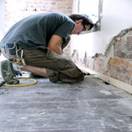 Why is Internal Wall Insulation Important?
Why is Internal Wall Insulation Important?
Internal wall insulation takes you a step towards having a warm (or cool) home and rises its thermal performance to a higher level. How many times have you set in your living room covered up with blankets waiting for the winter to end. Or how many times have you spent watching your favorite television show or reading your favourite book with all your cooling devices on and still feeling a bit hot? Finally, by the time your utility bills come, you are perfectly aware that something has to change Well, why not invest in your home insulation and properly insulate your internal walls and solve all the named problems in only a few steps.
Why internal wall insulation?
Internal wall insulation is a very effective way to create a stable and constant environment and prevent external temperature changes affect the temperature within your home. There are quite a few reasons that could easily persuade you to decide which insulation method to go for, purchase adequate insulating material and start installing. First of all, insulating your internal walls will drastically reduce heat loss which will make your home much easier to heat and keep it warm even when all the heating devices are off. It also goes the other way around. It will stop the heat from penetrating your home in those months you want to keep it nice and cool. The next benefice imposes itself – less energy consumption is followed by lower electricity bills and considerable savings. That is not it. There is another aspect of insulation to take into account and that is sound (acoustic) insulation which will also be improved and all the intolerable noise kept outside. There are also some positive side effects like mould growth and condensation prevention alongside clean look of your walls without affecting the external appearance of the building.
What options are there?
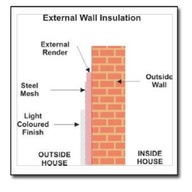 Namely, solid walls can be insulated in two basic ways, on the outside or on the inside. There are some up and downsides to both insulation methods. External wall insulation systems usually include insulation fixed to the wall and some protective cladding or render installed on top of insulation, keeping it safe from impact, abrasion or the weather. Though external insulation will cover and protect the entire wall, it will dramatically influence and alter the appearance of the wall. It may also include repositioning the drain pipes and guttering, as well as wall and roof junctions adaptations and cause the changes in your window and door appearance, since the insulation needs to go around these in order of avoiding potential bridging problems. Given the named reasons, a special permit may be required, so always check with the local authorities before commencing this insulation process. When it comes to internal wall insulation, it is a much simpler job which you can do yourself. However, since insulating on the inside it will reduce your interior space. Also some internal features like skirting boards, picture rails or plaster cornices will be affected. On the other hand, installation process is not that complicated.
Namely, solid walls can be insulated in two basic ways, on the outside or on the inside. There are some up and downsides to both insulation methods. External wall insulation systems usually include insulation fixed to the wall and some protective cladding or render installed on top of insulation, keeping it safe from impact, abrasion or the weather. Though external insulation will cover and protect the entire wall, it will dramatically influence and alter the appearance of the wall. It may also include repositioning the drain pipes and guttering, as well as wall and roof junctions adaptations and cause the changes in your window and door appearance, since the insulation needs to go around these in order of avoiding potential bridging problems. Given the named reasons, a special permit may be required, so always check with the local authorities before commencing this insulation process. When it comes to internal wall insulation, it is a much simpler job which you can do yourself. However, since insulating on the inside it will reduce your interior space. Also some internal features like skirting boards, picture rails or plaster cornices will be affected. On the other hand, installation process is not that complicated.
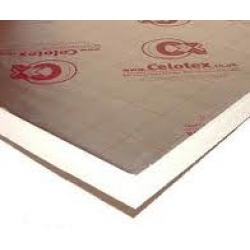
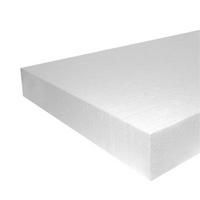 You could insulate your interior walls in two basic ways. Your first option is using rigid insulation boards, such as polystyrene or PIR boards you could find at Insulation Shop, including Jablite Polystyrene Insulation Board, Celotex or Kingspan PIR Boards and much more. Basically, adhesive is used to fix the insulation boards onto the wall and covered with some finish like plasterboard, lath or plaster. This is probably the best solution if you have flat, clean walls onto which rigid boards can easily be attached to.
You could insulate your interior walls in two basic ways. Your first option is using rigid insulation boards, such as polystyrene or PIR boards you could find at Insulation Shop, including Jablite Polystyrene Insulation Board, Celotex or Kingspan PIR Boards and much more. Basically, adhesive is used to fix the insulation boards onto the wall and covered with some finish like plasterboard, lath or plaster. This is probably the best solution if you have flat, clean walls onto which rigid boards can easily be attached to.
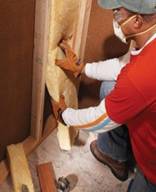 If not, you could go for interior wall insulation using a stud wall and insulators like mineral wool. This includes making a timber or metal studwork frame which is installed onto the wall and later on filled wit mineral wool, in between the frame joists. Some plaster finish is also added at the end. If you are not sure which insulation product to get, we recommend using natural fiber materials such as ThermaFleece Eco Rolls consisting of 75% Sheep’s wool, 15% recycled polyester and 10% polyester binder with a high recycled content which makes it not only highly effective but also very eco-friendly.
If not, you could go for interior wall insulation using a stud wall and insulators like mineral wool. This includes making a timber or metal studwork frame which is installed onto the wall and later on filled wit mineral wool, in between the frame joists. Some plaster finish is also added at the end. If you are not sure which insulation product to get, we recommend using natural fiber materials such as ThermaFleece Eco Rolls consisting of 75% Sheep’s wool, 15% recycled polyester and 10% polyester binder with a high recycled content which makes it not only highly effective but also very eco-friendly.
Regardless of which insulation method you go for, there is a very important issue to address first. You will need to make sure that any problems of penetrating or rising damp are dealt with before starting the insulation process. If not you are risking trapping the moisture within the structure. This is something to consider even when insulating. Since there is a possibility that some areas will remain uninsulated like the places where internal and external wall come together, this might cause condensation collecting. You could try minimizing the problem by carefully insulating around internal wall edges, doors and window recess or by adding a vapour control coating on top of insulation.
If you have more thoughts on this type of insulation, feel free to post them in the comments section below. I will be more than happy to answer any questions you might have.








